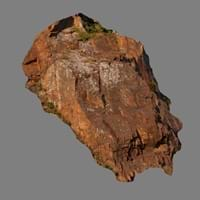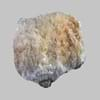Definition
Granulite is fine to medium grained metamorphic rock with a granular of polygonal crystals.
Diatomite is a fine-grained sedimentary rock which is formed from consolidated diatomaceous earth
Origin
Central Europe
Germany
Discoverer
Unknown
Unknown
Etymology
From Latin granulum, a little grain or fine grained
From diatom + -ite1
Class
Metamorphic Rocks
Sedimentary Rocks
Sub-Class
Durable Rock, Hard Rock
Durable Rock, Soft Rock
Group
Not Applicable
Not Applicable
Other Categories
Coarse Grained Rock, Medium Grained Rock, Opaque Rock
Fine Grained Rock, Opaque Rock
Texture
Granoblastic
Clastic or Non-Clastic
Color
Black, Brown
Grey, White, Yellow
Durability
Durable
Non-Durable
Appearance
Veined or Pebbled
Soft
Interior Uses
Bathrooms, Countertops, Decorative Aggregates, Entryways, Flooring, Homes, Hotels, Interior Decoration, Kitchens, Stair Treads
Decorative Aggregates, Homes, Interior Decoration
Exterior Uses
As Building Stone, As Facing Stone, Garden Decoration, Office Buildings, Paving Stone
Garden Decoration, Paving Stone
Other Architectural Uses
Curbing
Curbing
Construction Industry
As Dimension Stone, Building houses or walls
As Dimension Stone, Cement Manufacture, Construction Aggregate, for Road Aggregate, Landscaping, Making natural cement, Source of calcium
Medical Industry
Not Yet Used
Not Yet Used
Antiquity Uses
Artifacts, Monuments, Sculpture
Artifacts
Commercial Uses
Curling, Gemstone, Laboratory bench tops, Soil Conditioner, Tombstones
Alumina Refineries, Animal feed filler, As a Feed Additive for Livestock, Creating Artwork, Drawing on blackboards, Fire resistant, Gymnasts, athletes and mountain climbers use for grip, In aquifers, Soil Conditioner, To ignite fire, Used as a filter medium, Used as an insecticide, Whiting material in toothpaste, paint and paper
Types
Not Available
Not Available
Features
Clasts are smooth to touch
Clasts are smooth to touch, Is one of the oldest rock, Smooth to touch, Very fine grained rock
Archaeological Significance
Monuments
Used
Not Yet Used
Famous Monuments
Data Not Available
Not Applicable
Sculpture
Used
Not Yet Used
Famous Sculptures
Data Not Available
Not Applicable
Pictographs
Not Used
Used
Petroglyphs
Not Used
Used
Figurines
Used
Not Yet Used
Formation
Granulite is a fine-grained granular metamorphic rock in which the main component minerals are feldspars and quartz and forms at high temperature and pressure conditions.
Diatomite rock formed from the skeletal remains of single celled plants called diatoms. When diatoms die, their skeletal remains sink to the bottom of lakes and oceans etc. hence forming diatomite deposit.
Mineral Content
Amphibole, Biotite, Feldspar, Hornblade, Micas, Muscovite or Illite, Plagioclase, Quartz
Calcite, Clay, Clay Minerals, Quartz, Sand
Compound Content
Aluminium Oxide, CaO, Carbon Dioxide, Iron(III) Oxide, FeO, Potassium Oxide, MgO, MnO, Sodium Oxide, Phosphorus Pentoxide, Sulfur Dioxide, Titanium Dioxide
Ca, NaCl, CaO
Types of Metamorphism
Not Applicable
Not Applicable
Types of Weathering
Biological Weathering, Chemical Weathering
Biological Weathering, Chemical Weathering, Mechanical Weathering
Types of Erosion
Chemical Erosion, Water Erosion, Wind Erosion
Chemical Erosion, Coastal Erosion, Wind Erosion
Grain Size
Medium to Coarse Grained
Very fine-grained
Fracture
Not Available
Not Available
Porosity
Very Less Porous
Highly Porous
Compressive Strength
Not Available
Cleavage
Imperfect
Non-Existent
Toughness
Not Available
1
Specific Gravity
2.8-3.0
2.3-2.4
Transparency
Opaque
Opaque
Density
3.06-3.33 g/cm3
2.49-2.51 g/cm3
Resistance
Heat Resistant, Wear Resistant
Heat Resistant
Deposits in Eastern Continents
Asia
China, India, Iran, Saudi Arabia, Sri Lanka, Taiwan, Thailand, Turkey, Vietnam
Brunei, India, Indonesia, Malaysia, Singapore, Thailand, Vietnam
Africa
Angola, Egypt, Madagascar, Nigeria, South Africa
Cameroon, Chad, Ghana, Kenya, Malawi, Sudan, Tanzania, Togo, Zambia, Zimbabwe
Europe
Austria, Belgium, Finland, France, Germany, Italy, Norway, Sardinia, Spain, Switzerland, The Czech Republic, Venezuela
England, France, Germany, Spain, United Kingdom
Others
Not Yet Found
Not Yet Found
Deposits in Western Continents
North America
Canada, USA
Canada, USA
South America
Not Yet Found
Colombia
Deposits in Oceania Continent
Australia
Not Yet Found
Adelaide, New Zealand, Queensland, Tonga, Victoria, Yorke Peninsula
Granulite vs Diatomite Characteristics
Though some rocks look identical, they have certain characteristics which distinguish them from others. Characteristics of rocks include texture, appearance, color, fracture, streak, hardness etc. Granulite vs Diatomite characteristics assist us to distinguish and recognize rocks. Also you can check about Properties of Granulite and Properties of Diatomite. Learn more about Granulite vs Diatomite in the next section. The interior uses of Granulite include Bathrooms, Countertops, Decorative aggregates, Entryways, Flooring, Homes, Hotels, Interior decoration, Kitchens and Stair treads whereas the interior uses of Diatomite include Decorative aggregates, Homes and Interior decoration. Due to some exceptional properties of Granulite and Diatomite, they have various applications in construction industry. The uses of Granulite in construction industry include As dimension stone, Building houses or walls and that of Diatomite include As dimension stone, Cement manufacture, Construction aggregate, For road aggregate, Landscaping, Making natural cement, Source of calcium.
More about Granulite and Diatomite
Here you can know more about Granulite and Diatomite. The life cycle of a rock consists of formation of rock, composition of rock and transformation of rock. The composition of Granulite and Diatomite consists of mineral content and compound content. The mineral content of Granulite includes Amphibole, Biotite, Feldspar, Hornblade, Micas, Muscovite or Illite, Plagioclase, Quartz and mineral content of Diatomite includes Calcite, Clay, Clay Minerals, Quartz, Sand. You can also check out the list of all Metamorphic Rocks. When we have to compare Granulite vs Diatomite, the texture, color and appearance plays an important role in determining the type of rock. Granulite is available in black, brown colors whereas, Diatomite is available in grey, white, yellow colors. Appearance of Granulite is Veined or Pebbled and that of Diatomite is Soft. Properties of rock is another aspect for Granulite vs Diatomite. The hardness of Granulite is 6-7 and that of Diatomite is 1. The types of Granulite are Not Available whereas types of Diatomite are Not Available. Streak of rock is the color of powder produced when it is dragged across an unweathered surface. The streak of Granulite and Diatomite is white. The specific heat capacity of Granulite is 0.14 kJ/Kg K and that of Diatomite is 0.90 kJ/Kg K. Depending on the properties like hardness, toughness, specific heat capacity, porosity etc., rocks are resistant to heat, wear, impact, etc.Granulite is heat resistant, wear resistant whereas Diatomite is heat resistant.





